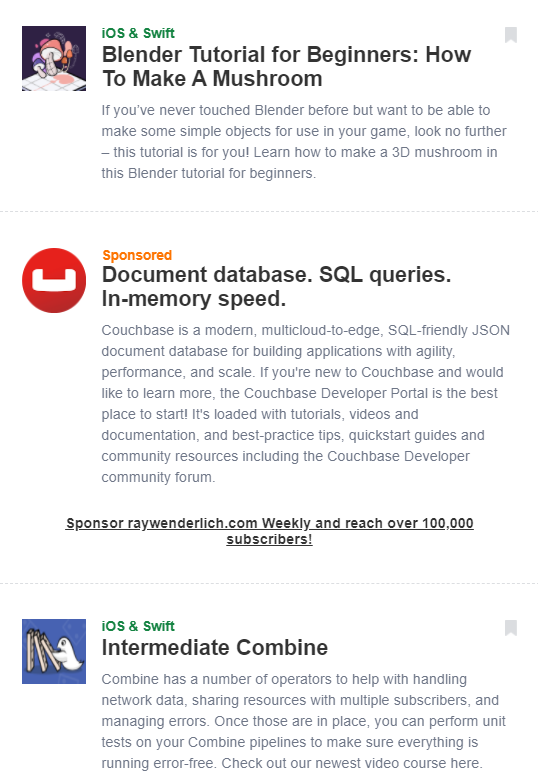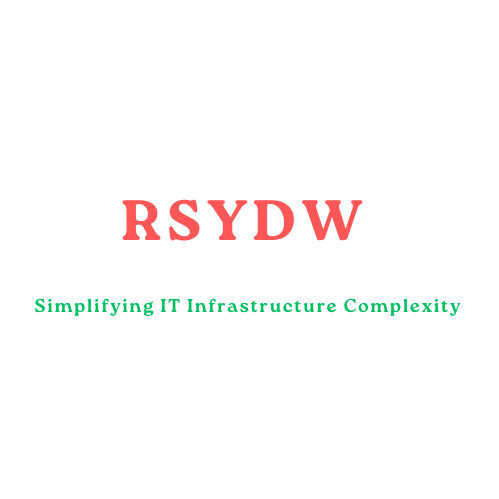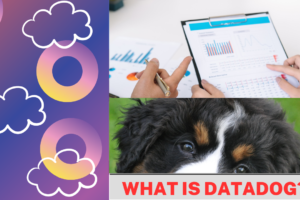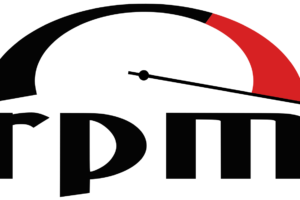This post was sponsored by Paved. The opinions expressed in this article are the sponsor’s own.
Relevant targeting, increased engagement, and higher ROI — now is the time to expand your marketing strategy to include high-performing newsletter ads.
Newsletter sponsorships are one of the most effective ways to reach your target audience and build trust among potential customers.
If you’re a DTC or B2B brand wanting to get more sign-ups, sales, and leads, listen up! We’re about to show you how to:
- Find newsletters with an audience that’s a perfect fit for your product/service.
- Choose the right newsletter format and placement for your brand.
- Get savvy on newsletter metrics and pricing so you can optimize your ROI.
Table of Contents
Why Newsletters Are a Growing Online Marketing Channel
Like most forms of digital content, newsletters exist to inform, educate, and entertain.
But, unlike over-saturated advertising channels like Facebook Ads, Google Ads, LinkedIn, and others, newsletter audiences are hyper-engaged.
Other forms of online advertising have to grapple with disappearing cookies, privacy issues, fake accounts, bad algorithms, and ad blindness. Newsletter advertising completely circumvents those challenges.
Readers of newsletters opt-in. They take the time to enter their email address and confirm their interest. The signal of interest from a newsletter subscription is much more powerful than behavior-based signals from liking a Facebook page or following a hashtag.
Newsletter Ads Get Better Engagement Rates
One of the biggest advantages of email ads is that they can look like original content. Done correctly, they appear as part of the normal newsletter.
This native approach allows you to borrow the trustworthiness of the newsletter writer/publisher. Each ad, usually called a sponsorship, comes with a personal recommendation from the newsletter itself.
Here’s an example of the popular newsletter Raywenderlich. The advertisement by Couchbase is almost indistinguishable from the regular content.


Pro Tips:
- A newsletter’s opted-in audience is a strong signal of the audience’s interests.
- Native email ads borrow trust from the newsletter’s writer or publisher.
- Newsletters will often have a “fresh” audience of people you’ve never reached before.
Examples of Newsletter Audiences
The more niche an audience, the more valuable it is.
For example, some email lists only have a few thousand subscribers but contain a high concentration of executives. Advertising on this type of newsletter guarantees that decision-makers see your brand.
Popular newsletter categories and topics include:
- Technology and development.
- Business and finance.
- Design.
- Lifestyle.
How to Find Newsletters Aligned with Your Target Audience
First, you need to understand your customer profiles clearly. You need to know what kind of content they read, the problems they encounter, and how your product or service solves those problems.
1. Research Newsletters in Your Niche
While you might be tempted to start big with a well-known newsletter, we recommend researching alternatives first.
Newsletters with big followings have engaged audiences but a less focused readership. Niche topics that perfectly fit your ideal customer profile can net you a far greater return on investment.
2. Understand Newsletter Performance & Engagement
When looking for a newsletter sponsorship, you need to take note of the performance metrics below (these data points may differ from the metrics you track with your company’s own email sends).
You can obtain this information by asking publishers for a media kit or browsing a reputable newsletter marketplace.
3. Compare Pricing to Find the Best Deals
Once you know how to read the newsletter’s engagement metrics, it’s easy to decode pricing.
Most newsletter sponsorships are priced on a cost-per-thousand-impressions (CPM) basis. The CPM is based on the total number of subscribers, not actual impressions. This is why it’s essential to know the open rate — it helps you estimate the actual impressions a newsletter receives.
At Paved, we prefer to include CPC and CPA in our calculations for a more accurate prediction of ROI.
How to Calculate CPM
- CPM: The cost of 1,000 impressions/opens.
- First, divide the number of subscribers by 1,000, then divide the sponsorship cost by the result.
- Example: $1,000 / (6,000 / 1,000) = $16.6 CPM.
How to Predict Your CPC
- CPC: The cost per click.
- Divide the sponsorship cost by the total estimated ad clicks.
- Example: $1,000 / 500 = $2 CPC.
How to Predict Your CPA
- CPA: The cost per sale, sign up, or lead.
- Divide the sponsorship cost by the total expected conversions.
- For instance, if you have a landing page that usually gets a 50% conversion rate on 500 clicks, that’d be $1,000 / 250 = $4 CPA.
Pro Tip: On Paved, all these calculations are included on each sponsorship profile.
Choose a Sponsorship Format & Placement
There are two main types of newsletter ad format: native email placements and dedicated sends.
You will need to prepare an image, headline, body copy, and CTA for each sponsorship, however, some larger newsletters will write your ad copy for you based on your guidelines and goals.
Format #1: Native Email Ads
Native email ads are included in the regular newsletter content and are designed to match the style of the newsletter (like the example above). Shorter newsletters often have just one available ad placement. Longer newsletters can have three or more ads per newsletter.
There are three commonly used native email ad placements. While you may encounter different naming conventions, placement positions remain consistent:
The Hero or Header Sponsorship
As this placement is right at the top of the newsletter, it gets the most attention from subscribers. You get plenty of space to showcase your brand including a large image, logo, body copy, headline, and CTA.
The Primary or Mid Sponsorship
Often the most popular placement due to its native appearance. This spot is perfect if you want space to describe your product or service in more detail.
The Snippet or Footer Sponsorship
A snippet is a snappy sentence or two near the end of the newsletter. Many snippets are written in a click-bait style and compete fiercely for the reader’s attention.
Pro Tips
A few rules of thumb when choosing your placement:
- You get more clicks on higher placements (and the more expensive the ad).
- Images don’t necessarily boost performance – it depends on the newsletter.
- Banner ads get the lowest number of clicks.
Format #2: Dedicated Emails
In our experience, dedicated sends (also known as e-blasts) get the best ROI.
With dedicated emails, all of the content in the send is dedicated to your brand and sent out to the publisher’s list (or a segment of the list).
They work so well for some advertisers that their newsletter strategy consists almost entirely of dedicated sends.
How to Track ROI on Your Newsletter Sponsorships
To track ROI with any campaign, you need to collect data on two metrics:
- Traffic to your landing page.
- Conversions from page visitors.
The easiest way to get started is to track user activity on your pages using UTMs.
In Google Analytics, you will be able to see how much traffic is generated from each campaign.
Be sure to use the same terms in your UTM parameters to ensure your tracking is accurate and consistent.
Pro tip: Add a pixel to your landing page to easily track conversions and to retarget visitors on other advertising platforms.
Ask for Proof of Send From the Publisher
You can also ask for send statistics from the publisher directly. You should receive the:
- Date of send.
- Number of subscribers.
- Exact open rate.
- Clicks on your sponsorship.
At Paved, we collect open rate and sponsorship clicks automatically to streamline your reporting process.
Fast-Track Your Growth Strategy by Joining a Marketplace
It’s easy to get started with newsletter advertising, especially when you have the right tools to scale your campaigns.
It’s essential to develop a process for booking email ads. Without one, finding publishers, evaluating sponsorship prices, and running campaigns can be a time-consuming job.
Marketplaces like Paved curate hundreds of high-quality publishers in one central place so you don’t have to waste time figuring out what works.
You can use Paved for free to quickly find publishers for your audience and scale your growth strategy.
Image Credits
Featured Image: Image by Paved. Used with permission.
In-Post Photos: Images by Paved. Used with permission.



